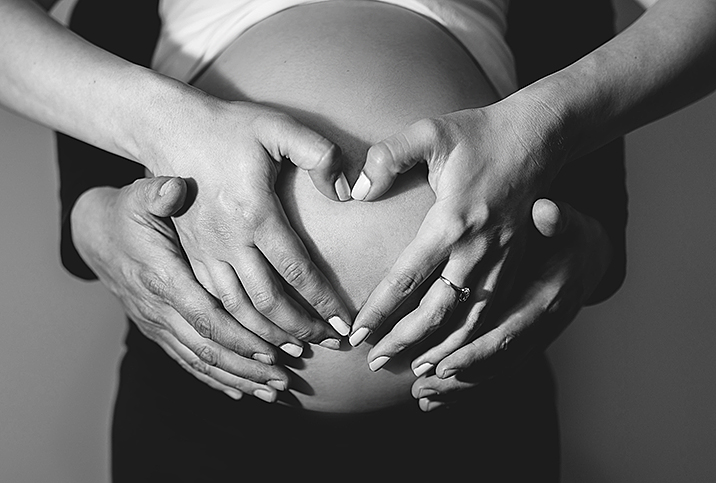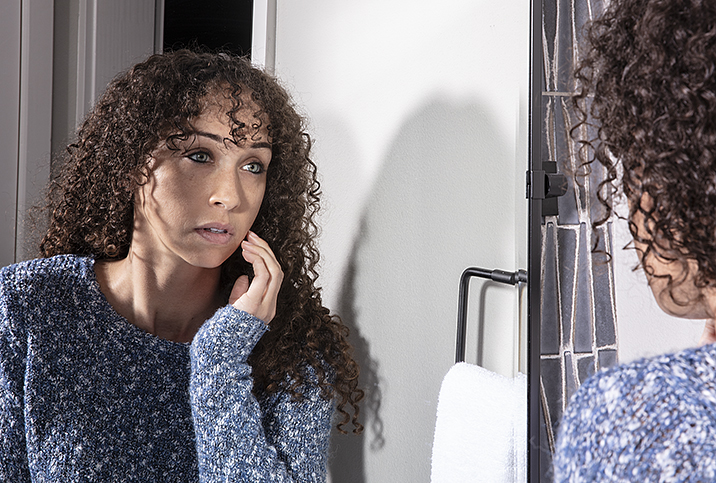Preeclampsia: Myths & Misconceptions

Preeclampsia is a condition affecting 5 percent of all pregnant women. If left untreated, preeclampsia can be dangerous for both the woman and her baby.
If you've been diagnosed with preeclampsia, it’s important to understand the many misconceptions about the condition and focus on what you need to know.
Myth: Preeclampsia happens only late in pregnancy.
Reality: Preeclampsia typically happens late in pregnancy, around 34 weeks, or 48 hours after delivery. But on rare occasions, it can begin as early as 20 weeks. It's important that you and your OB-GYN keep an eye out for the symptoms of preeclampsia throughout your pregnancy.
The symptoms of preeclampsia include high blood pressure, protein in urine, swelling of hands, feet and legs, weight gain over the course of one to two days, stomach pain, headaches, urinating less, dizziness, nausea or vomiting, and changes in vision.
Some women develop preeclampsia without showing any symptoms, so it’s important to schedule regular prenatal appointments and have your doctor conduct blood pressure checks and urine tests.
Myth: Preeclampsia can be predicted.
Reality: The cause of preeclampsia is unknown, but experts believe it occurs when the placenta doesn’t act as it should. Unfortunately, it’s hard to predict if this will happen during a pregnancy, but some experts believe bad nutrition, high body fat, genetics and poor blood flow to the uterus could be contributing factors.
Statistically, some risk factors of developing preeclampsia include: being pregnant for the first time or with more than one baby or with a new partner; being a pregnant teenager, a woman over 40 or African American; or having a history of high blood pressure, obesity, diabetes, kidney disease, lupus or rheumatoid arthritis. An obstetrician will likely prescribe a daily aspirin for prevention of preeclampsia if a patient has any of these risk factors.
It’s important to know whether your mother or sister had preeclampsia because that can also be an indication that you may develop it, too.
Myth: There are no serious complications of preeclampsia.
Reality: The initial symptoms may seem trivial, but preeclampsia can have major health complications for the mother.
Preeclampsia can cause complications such as heart failure, fluid buildup, stroke, seizure, reversible blindness and bleeding after birth. If preeclampsia causes damage to the liver and blood cells, it can also lead to HELLP syndrome, which must be treated immediately. The HELLP acronym is derived from hemolysis, which is the breaking down of red blood cells, elevated liver enzymes and low platelet count. These complications are rare, but extremely serious.
When left untreated, preeclampsia can lead to eclampsia, a condition that has serious health risks for both the mother and the child and can lead to death in rare cases. One telltale sign that you have eclampsia is if you’ve been diagnosed with preeclampsia and you begin having seizures.
Myth: You can cure preeclampsia.
Reality: Once it develops, the only way to cure preeclampsia is to give birth. Even then, symptoms of preeclampsia can persist for up to 12 weeks after birth.
Fortunately, there are ways to cope with preeclampsia. If your preeclampsia is causing problems and you’re not ready to give birth, your doctor may recommend bed rest, blood and urine tests, and medication to lower your blood pressure. Once your baby has developed, your doctor may recommend a cesarian section or labor induction to keep your preeclampsia from getting worse.
If you’re worried about preeclampsia, you can make some lifestyle changes to lower your chances of developing it. Losing weight, quitting smoking, exercising regularly and controlling your blood pressure can all help.
Scheduling regular appointments with your doctor for prenatal care is also a good idea as that can help detect preeclampsia before it becomes a serious or long-term problem.
Myth: Preeclampsia can’t harm the baby.
Reality: If you’ve been diagnosed with preeclampsia, you’re most likely worried for the health of your baby. Fortunately, when monitored properly and treated correctly, preeclampsia shouldn’t keep you from having a healthy baby.
However, preeclampsia can prevent your placenta from getting the blood it needs to sustain your baby. Because of this, preeclampsia can result in fetal growth restrictions, as well as premature birth and possible subsequent complications, such as learning disabilities, epilepsy, hearing and vision problems, and cerebral palsy.
If preeclampsia is suspected, your obstetrician will monitor the growth of the baby through serial ultrasounds and also order frequent nonstress testing (NST) and biophysical profiles (BPPs) to monitor fetal well-being.
A preeclampsia diagnosis may be intimidating at first, but the condition is temporary and manageable. If you take it seriously and attend regular prenatal appointments, the chances of developing any harmful complications are low. Just focus on keeping yourself and your baby healthy during your pregnancy and direct any questions to your OB-GYN.
















